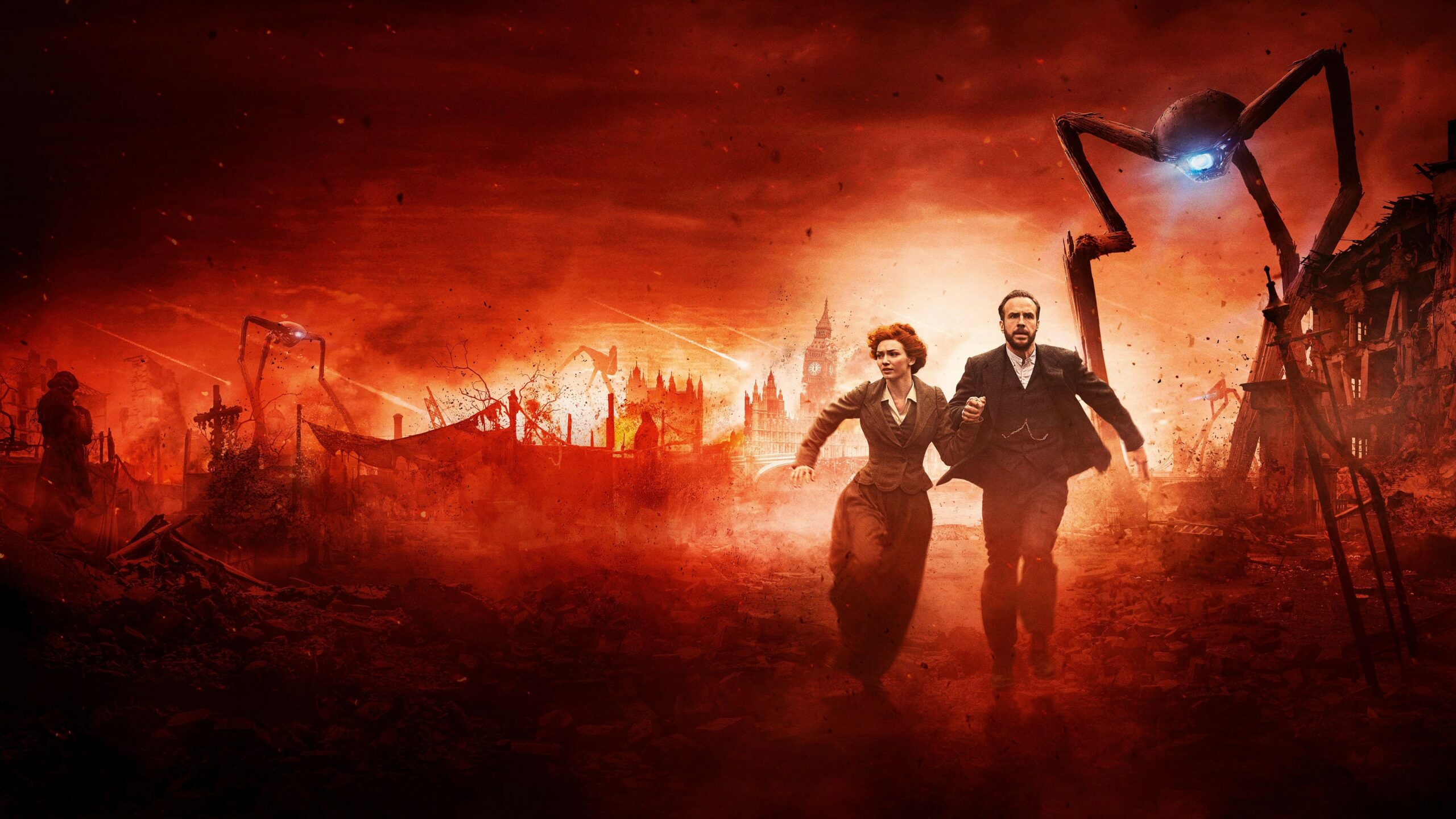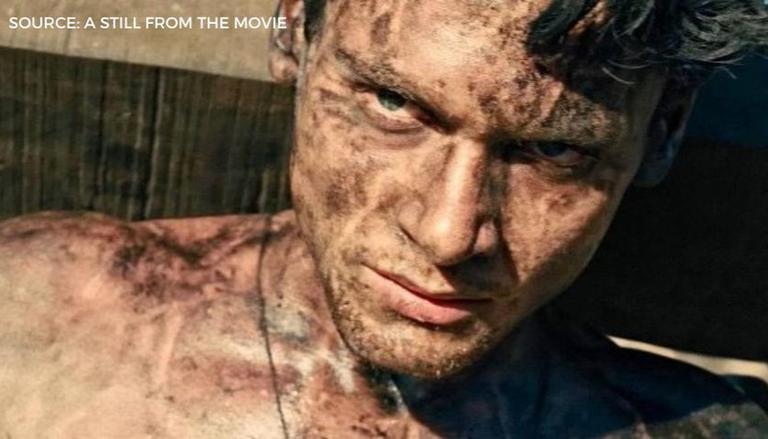Are you a fan of sci-fi movies and wondering if the iconic War of the Worlds is based on a true story? The answer might surprise you. The movie is actually based on a novel by H.G. Wells, a prominent English writer who was known for his works of social commentary, politics, history, popular science, satire, biography, and autobiography. Published in 1898, The War of the Worlds tells a fictional story of an alien invasion through an unidentified narrator. The story has since been adapted into various forms of media, including a famous fictional news broadcast by Orson Welles, showcasing Martians landing in New Jersey. So, let’s dive into the world of War of the Worlds and explore its fascinating storyline and characters.
War of the Worlds: Fiction or Reality?
H.G. Wells’ novel The War of the Worlds is a work of fiction that tells the story of a Martian invasion of Earth. While the novel is not based on a true story, it is widely regarded as a seminal work of science fiction, and has been adapted into numerous films, television shows, and other media over the years. The novel was first published in 1898, and was one of the earliest works to explore the idea of extraterrestrial life and the potential for contact between humans and beings from other planets. The story has remained popular for over a century, and continues to capture the imaginations of readers and viewers around the world.
Interestingly, Orson Welles famously adapted the story into a radio drama in 1938, which caused widespread panic among listeners who believed that the fictional news broadcast was a real report of an alien invasion. This incident has become a part of popular culture, and is often cited as an example of the power of storytelling and the influence of media on society. While The War of the Worlds may not be based on a true story, its impact on popular culture and science fiction cannot be overstated.

🍿 Must Read Was War Dogs a true story?
The Inspiration behind The War of the Worlds Film: Unveiling the Source Material.
The War of the Worlds movie is based on the classic novel of the same name by H. G. Wells. The novel was published in London in 1898 and has been adapted into various forms of media over the years. The film details closely follow the events of the novel and bring them to life on the big screen. The story centers around an alien invasion of Earth and the attempts of humanity to fight back against the powerful and technologically advanced invaders. The novel has been widely regarded as a masterpiece of science fiction and the film adaptation stays true to the original source material. Overall, The War of the Worlds movie stays true to its roots and provides an exciting and faithful retelling of H. G. Wells’ classic novel.
The Setting of the Original War of the Worlds: Unveiled.
The original War of the Worlds story is based in Surrey, England, and was written by H.G. Wells in 1898. The novel is considered to be one of the earliest science fiction stories that describes a battle between humans and extraterrestrial beings. The story is told through the first-person accounts of an unnamed protagonist in Surrey and his younger brother in London, as they witness the invasion of Martians in southern England.
H.G. Wells’ War of the Worlds is a pioneering work in science fiction literature, and the novel has inspired countless adaptations in various forms of media. The story’s setting in Surrey, England was a significant factor in creating a sense of realism and authenticity in the narrative. The novel’s vivid descriptions of the Martian invasion and the impact it had on the English countryside have made it a classic piece of science fiction literature.
While the novel is set in Surrey, the story’s themes and ideas are universal and have inspired stories and adaptations from all over the world. The original War of the Worlds story has also influenced the portrayal of extraterrestrial beings in popular culture, with the notion of Martians becoming a common trope in science fiction.
In conclusion, the original War of the Worlds story is based in Surrey, England, and is one of the earliest science fiction stories to feature an alien invasion. The novel’s setting and vivid descriptions have contributed to its status as a classic work of science fiction literature, and its influence can still be seen in modern-day adaptations and popular culture.

Which War of the Worlds movie is the most truthful to the original story?
“The War of the Worlds” by H.G. Wells has been adapted into several movies over the years, but which one is the most accurate? The answer is the 1953 version, directed by Byron Haskin. Despite being over 65 years old, this movie still holds up well today. The sound and special effects are stunning, especially considering the technology available at the time. In fact, the Martian machines depicted in this movie are still the most futuristic and accurate version yet created.
While this version may be period dated, it is still a faithful adaptation of the original novel. The plot follows the book closely and stays true to the overall themes and concepts. The movie also manages to capture the sense of dread and hopelessness that Wells’ novel conveys.
Overall, the 1953 version of “The War of the Worlds” is a classic that has stood the test of time. Its stunning special effects and accurate depiction of the Martian machines make it the most accurate adaptation of the book to date. Even after all these years, it remains a must-see for fans of science fiction and fans of the original novel.
>> Related – Is Purple Hearts based off a true story?
Comparing the Book and Movie Versions of War of the Worlds: A Study in Accuracy
H.G. Wells’ novel “The War of the Worlds” was first published in 1898 and is considered a classic work of science fiction. The book has been adapted into various forms, including radio dramas, comics, and movies over the years. In 2005, Steven Spielberg directed a movie adaptation of the novel, starring Tom Cruise, which was a box office success.
While the movie does follow the basic premise of the novel, it does diverge from the original story in several ways. The addition of Cruise’s children and his troubled relationship with them is a significant change made in the movie. These additions work well as they add depth to Cruise’s character and provide an emotional hook for the audience. However, this change also shifts the focus of the plot, taking away from the overall sense of dread and horror that the original story conveyed.
Another significant change made in the movie adaptation is the time period. The book is set in the 19th century, while the movie is set in the present day. This change does not work as well as the addition of Cruise’s children, as it takes away from the original story’s social commentary on British imperialism and colonialism. Instead, the movie focuses more on the impact of modern technology on humanity.
Overall, while the movie adaptation of “The War of the Worlds” does take creative liberties with the source material, it still manages to capture the essence of the original story. The changes made to the plot and characters work to create a compelling narrative that stands on its own.
The Identity of the Alien Creature in War of the Worlds
The monster in the War of the Worlds is the Martian. The Martians are described as octopus-like creatures with a large head, about 4 ft across, featuring two eyes and a V-shaped, beak-like mouth. The Martians have two branches, each of which consists of eight tentacles that are almost whip-like in nature. These tentacles are grouped around the mouth, which is referred to as the ‘hands’. The Martians are the invaders who come to Earth and wreak havoc by destroying everything in their path. The descriptions of the Martians are vivid and terrifying, and they are depicted as an otherworldly force that is almost unbeatable. The monstrous appearance of the Martians is one of the reasons why the War of the Worlds remains a classic science fiction novel to this day.
![[WTF] Insane 'War of the Worlds The True Story' Retells History ...](https://celebra.fm/wp-content/uploads/2023/04/war-of-the-worlds-dvd-2.jpg)
Unraveling the mystery of Robbie’s survival in War of the Worlds
Robbie’s survival in “War of the Worlds” is a testament to his bravery and determination to protect his family. As they flee from the alien invasion, Robbie becomes determined to fight back and joins the army’s charge against the extraterrestrial forces. Despite being obscured by an explosion, Robbie manages to survive the battle on the hill. His fate after the explosion remains unknown until he surprisingly appears in Boston, where he is reunited with his family. His survival brings a sense of relief and joy to his family, who feared the worst.
Robbie’s journey from joining the army to reuniting with his family in Boston is a testament to his resilience and bravery. Despite the overwhelming danger posed by the aliens, Robbie remains determined to protect his family and fight back against the invaders. His survival is a crucial plot point in the movie, as it shows the audience that there is still hope even in the darkest of times.
Overall, Robbie’s survival in “War of the Worlds” is a remarkable accomplishment that showcases his bravery and determination. His actions serve as an inspiration to others facing seemingly insurmountable odds, reminding us that with strength, courage, and perseverance, anything is possible.
Decoding the Mysterious Red Substance in War of the Worlds.
The red slime in War of the Worlds refers to the red weed or plant that is seen in the 2005 adaptation of the movie by Steven Spielberg. This plant is a fast-growing vine that is brought to Earth by the alien invaders. The plant is portrayed as intentional and is used by the aliens to aeriform or mark their territory on Earth. Additionally, it is suggested that the plant could serve as a potential food source for the aliens. The red weed is a significant part of the movie’s plot, and it creates a sense of dread and destruction as it spreads rapidly across the Earth’s surface. The plant is a symbol of the alien invasion and represents the chaos and devastation that accompanies it. Overall, the red slime in War of the Worlds is a crucial element of the movie’s narrative and adds to its overall impact and suspense.
More to discover
while The War of the Worlds is a work of fiction, it has captured the imagination of audiences for over a century. H.G. Wells’ novel continues to inspire adaptations and interpretations, with some films being more accurate to the book than others. The concept of an alien invasion and the fear that it evokes is a timeless theme that continues to resonate with audiences today. Whether it’s the original novel or one of the many adaptations, The War of the Worlds is a classic that will continue to captivate audiences for generations to come.
